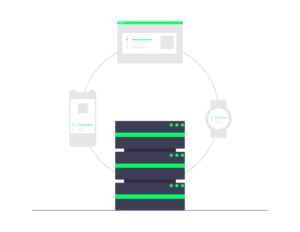About ALLEGRO ‘Agile ultra low energy secure networks’
 ALLEGRO aims at designing and validating a novel end-to-end sliceable, reliable, and secure architecture for next-generation optical networks, achieving high transmission/switching capacity
ALLEGRO aims at designing and validating a novel end-to-end sliceable, reliable, and secure architecture for next-generation optical networks, achieving high transmission/switching capacity
- with 10 Tb/s for optoelectronic devices and 1 Pbt/s for optical fiber systems
- low power consumption/cost
- with > 25% savings
- and secure infrastructures and data transfers.
The architecture relies on key enabling innovations:
- smart, coherent transceivers exploiting multi-band & multi-fiber technologies for P2P and P2MP applications, based on e.g., high-speed plasmonic modulators/photodetectors and programmable silicon photonic integrated waveguide meshes;
- loss-less, energy-efficient transparent photonic integrated optical switches, eliminating OEO conversions, e.g., with on-chip amplification in the O-band for datacom applications;
- a consistent approach to security, in terms of functional/ protocol architectures and communications, further improving QKD systems, enabling optical channel co-existence and researching on quantum-resistant (post-quantum) cryptography, developing systems based on physically unclonable functions; and
- a scalable AI/ML assisted control and orchestration system, responsible for autonomous networking, dynamic and constrained service provisioning, function placement and resource allocation, leveraging devices increasing programmability and overall network softwarization.
To achieve the target objectives and KPIs, ALLEGRO has defined a clear methodology ending in ambitious demonstrators. The consortium includes a good balance of industry and research/academia with know-how in complementary fields.
The results of ALLEGRO will be disseminated in leading conferences, events, and high-impact journals. They will have a concrete and measurable economic and social impact, contributing towards achieving key European objectives, reinforcing European leadership and digital sovereignty in the ongoing digital and green transition.
Project News
Project Update: Scenarios for Optical Encryption Using Quantum Keys
As part of our ongoing research within the Allegro project, we've been exploring innovative approaches to secure high-speed optical networks using quantum-generated keys. Our latest work focuses on encrypting optical signals, such as 16-QAM modulated signals, using...
Seamless Integration in ALLEGRO’s KMS Architecture
One of the standout features of our proposed Key Management System (KMS) in the ALLEGRO project is its seamless, agnostic integration capability. Thanks to its modular design, every subsystem within the KMS forms a clean, scalable interconnection with other components...
Project Update: Allegro – Key Management System (KMS) Architecture Visualisation
We are excited to share a visualisation and brief breakdown of the KMS general architecture we’ve been working on for the Allegro project. The KMS operates as a distributed network service, organised into a multi-instance ring architecture. At the heart of this design...
State of the Art in QKD Networks — Where Are We Today?
As part of the ALLEGRO project, we're diving deep into the realities of deploying and operating large-scale Quantum Key Distribution (QKD) networks — and it's clear there's both incredible potential and critical challenges ahead. 📌 What’s the current landscape? Only a...
Deploying and Operating Large-Scale QKD Networks — The Next Frontier in Quantum-Secure Communications
At ALLEGRO, we’re tackling one of the most exciting challenges in quantum communications: scaling up Quantum Key Distribution (QKD) networks to cover larger, more complex infrastructures — potentially operated by multiple independent organizations across adjacent...
Allegro Project Update: Robust Quantum Communication Under Classical Coexistence
In our latest experiment, we explored a realistic deployment scenario where Bob* (B*) is co-located with node D—a setup detailed in Figure 28(c). 📊 Figure 29(a) highlights the performance of our quantum network without classical light interference. Using the BB92...
Allegro Project Milestone: Advancing Entanglement Distribution for Quantum Networks
We're excited to share a major step forward in the Allegro project! To enable entanglement distribution, we’ve deployed a broadband Spontaneous Parametric Down-Conversion (SPDC) source, centered at 1550.12 nm. This entangled photon source connects to our quantum...
ALLEGRO Project Update: Evaluating QKD Performance in a Heterogeneous Quantum-Classical Network
Continuing our exploration of dynamic, quantum-secured networking, Figure 27(e) highlights the Secret Key Rate (SKR) performance of our QKD channel across multiple switching scenarios. We established the dedicated quantum link between Node 1 and Node 2 (grey line) as...
Dynamic QKD-Secured Optical Network with Co-existence of Quantum and Classical Channels
Excited to share our latest work on ALLEGRO, where we successfully implemented a quantum-secured optical network supporting dynamic co-switching and coexistence of quantum and classical channels over deployed fiber infrastructure. By integrating FPGA-based hardware...
Allegro Project Update: AI-Driven Insights into Quantum-Classical Co-Existence
As part of our ongoing efforts to explore the seamless integration of Quantum Key Distribution (QKD) and classical optical communication, we’ve taken a deep dive into noise prediction accuracy and system performance in co-existence scenarios. 🧠 Model Precision...
